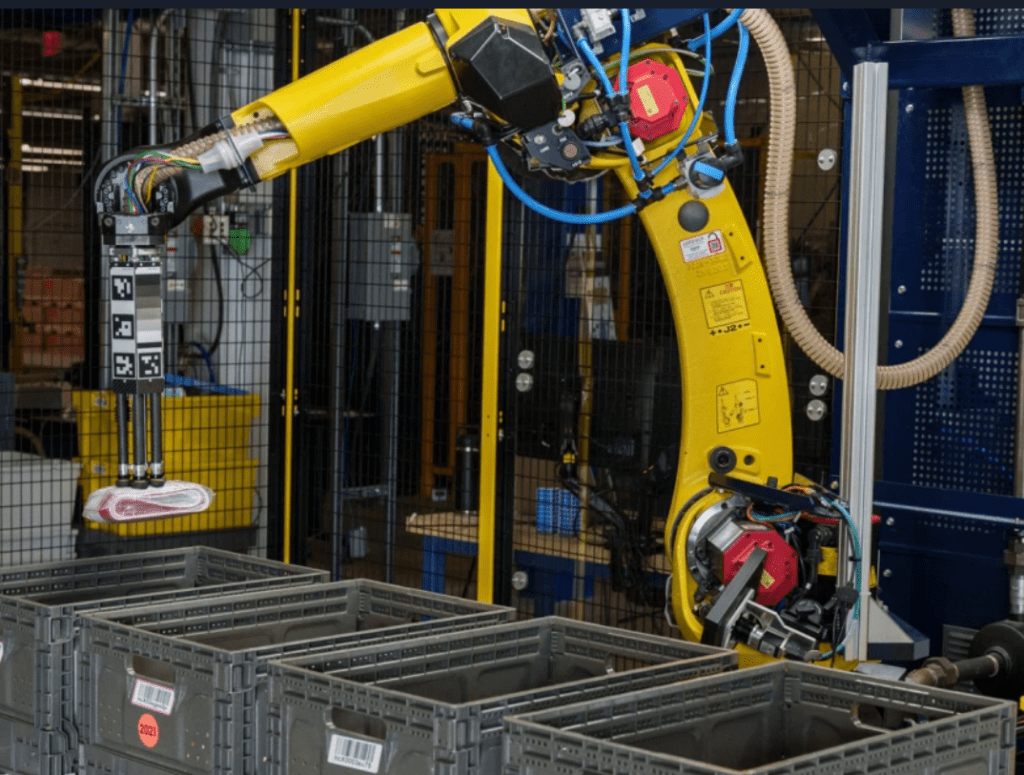
Goods-to-Person (G2P) is a warehouse technology that delivers the correct item to the right Operator or workstation at the right time.
Amazon has been at the forefront of the GTP revolution through its robotics initiatives.
However, despite impressive advances in G2P, some tasks remain too complex for automation.
Amazon recently announced Amazon Sparrow, the first robotic system in their warehouses to detect, select, and handle individual products in their inventory at scale.
Sparrow can pick items from bins or shelves so they can be packed for customer shipments. Because of the variety, shape, range, and textures of objects – this is a challenging operation for robotics. However, leveraging computer vision, a custom gripper, and AI, Sparrow can already recognize and handle millions of items and claims to take on repetitive tasks from the Operator.
However, if the robot could perform the task to human-level accuracy (or beyond) – the process of fulfillment and order management could be transformed. For example, human operators can pick 100 items per hour. With learning and improvements in AI, this could be exceeded. Last year, Amazon picked, stowed, or packed approximately 5 billion packages—or over 13 million packages per day. According to Amazon, Sparrow can handle 65 percent of more than 100 million items in its inventory.
Amazon is sensitive to the claims that robots could replace human workers. Amazon hence points out that its workforce has increased, and 700 new job categories have been created along with Amazon Mechatronic and Robotics Apprenticeship programs for workers. But as the scale and performance of robots increase, they will inevitably compete with humans for this role.
There is one more irony and challenge. Robots will work fast. There could be health and safety challenges for humans to work at the same rate. Nevertheless, this remains an impressive development that I follow with interest.
Image source: https://www.aboutamazon.com/new/transportation/amazon-robot-sparrow-streamlines-order-fulfillment-process
